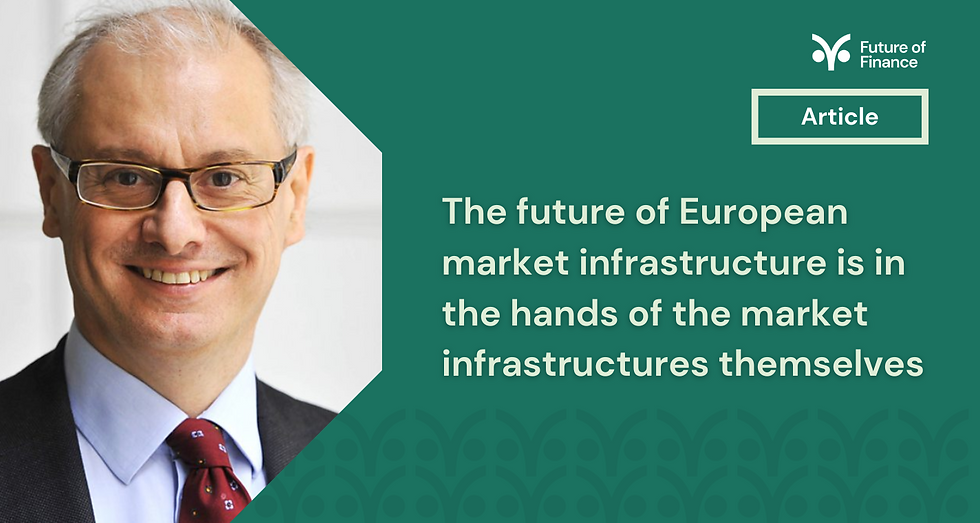If Europe needs a single European CSD, who will build it?
- Future of Finance

- Feb 22, 2024
- 3 min read
Updated: Jul 23

What is the event about?
On 17 November 2023 Christine Lagarde, the President of the European Central Bank (ECB), told a conference of bankers that “a truly European capital market needs consolidated market infrastructures.”[1] European capital markets certainly lack them now. They are a quarter the size of the American capital market yet support three times as many stock exchanges, and 20 times as many post-trade financial market infrastructures. The lack of a European equivalent of the Depository Trust and Clearing Corporation (DTCC) does not reflect a lack of regulatory effort. A succession of reports and schemes – Codes of Conduct, several pan-European regulations and even an entirely new settlement system run by the ECB (T2S) – dating back nearly a quarter of a century have largely failed to accelerate the consolidation of the capital market infrastructures of Europe. The price of that failure, in a higher cost of capital, a less resilient financial system and lower rates of innovation and economic growth, is more evident than ever in the aftermath of Brexit, amid a steady closing of open markets, and ahead of looming demographic and climate crises. So who and what can meet the challenge set by Christine Lagarde? That is the subject matter of this Future of Finance webinar. For further background on the subject, see the accompanying Future of Finance article, European capital markets are inefficient, so why aren’t European CSDs doing more about it?
Why attend?
Infrastructure affects everybody. The price, openness and efficiency of capital market infrastructures are a major determinant of the ability of all parts of an economy to invest, innovate and grow. And at the moment, the capital market infrastructures of Europe are relatively expensive, less-than-open and palpably inefficient, so there is less investment, innovation and growth. That lowers the standard of living of Europeans and makes it more difficult for them to find the money to meet the many challenges and opportunities they face.
Who should attend?
Anybody working in or supervising the securities services industry, whether at a central securities depository (CSD), an international central securities depository (ICSD), a global custodian bank, a sub-custodian bank, a central counterparty clearing house (CCP), a market infrastructure such as SWIFT or CLS, a central bank or a securities market regulator.
When is it happening?
Thursday, 22 February 2024 2pm UK time
What topics will be discussed?
What are the costs of a fragmented post-trade infrastructure in Europe?
What explains the continuing settlement inefficiencies of Europe, despite the introduction of T2S?
What has prevented the CSDs of Europe consolidating in the past?
Is the current ownership structure of European CSDs conducive to market-led consolidation?
Can a single programmable platform (a sort of Ethereum for CSDs) achieve the same effects as a single European CSD?
What part does blockchain technology have to play in improving the post-trade infrastructure of Europe?
Is the EU Pilot Regime a flop and will the UK Digital Securities Sandbox be one too?
Will pressure to settle on T+1 accelerate or decelerate change in European post-trade infrastructure?
Are there helpful technical solutions (e.g., “atomic” settlement, using AI and predictive analytics help improve settlement rates) short of consolidation?
What is the fastest way to a more efficient set of CSD services for the European capital markets – consolidation, cooperation and collaboration, regulatory intervention, market-led competition or technology?
Who is on the panel?
[1] “A Kantian shift for the capital markets union,” speech by Christine Lagarde, President of the European Central Bank, at the European Banking Congress, Frankfurt am Main, 17 November 2023, page 5.


